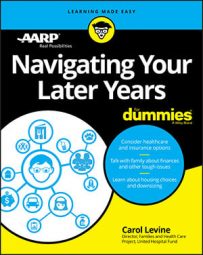Some people attach emotional value to items that represent unfulfilled goals. The sewing machine reminds Mom of the projects that she never got started and Dad the expensive woodworking tools that he can never figure out how to use. These lost opportunities may loom larger than items that are attached to completed projects.
People who experienced hard financial times may collect things that once were hard to come by but have no real use now such as monogrammed towels or heavy suitcases.
While you’re going through items, think about who in your family would want them. If there is conflict about distribution, it may be time for a family meeting led by a trusted friend or professional.
The positive side to downsizing can’t be overlooked. In the newly streamlined space, you can reposition furniture, highlight items you value highly, and in general make an old space both familiar and new. And there’s the practical benefit of making it easier to clean and to find things that always seem to be missing — your glasses or keys, for example.
In the award-winning AARP’s Downsizing the Family Home (Sterling), home and lifestyle columnist Marni Jameson offers helpful advice on both the practical aspects of downsizing and the emotional impact of the process. She and her brother managed their parents’ move from a family home laden with 50 years of memories to an assisted-living apartment. Her expertise and experience can be useful for someone planning to stay or move.
One way to keep memories alive is to take photos of objects that you don’t want to keep but don’t want to lose altogether. The photos can be put into digital form and shared with family and friends. Perhaps a young techie in your family can take on this task, or you can use a commercial service.
If the home is filled with garbage, piles of papers and bags, evidence of pest infestation, animal waste, unworkable toilets, or unsafe stairs, this is not ordinary clutter. It is likely a case of hoarding, which requires expert mental health attention as well as organizational assistance. According to the Mayo Clinic, “A hoarding disorder is a persistent difficulty discarding or parting with possessions because of a perceived need to save them… . Hoarding often creates such cramped living conditions that homes may be filled to capacity, with only narrow pathways winding through stacks of clutter… . People with hoarding disorder may not see it as a problem, making treatment challenging. But intensive treatment can help people with hoarding disorder understand how their beliefs and behaviors can be changed so that they can live safer, more enjoyable lives.” Hoarding is difficult to address because the person is often dealing with loss, trauma, and long-buried issues. A useful article prepared by the University of California-San Francisco is available. Another resource is the International OCD Foundation.

